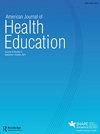Inequalities in Communicating about Nutrition Information during Prenatal Care: The After-Visit Summary
IF 0.8
Q4 PUBLIC, ENVIRONMENTAL & OCCUPATIONAL HEALTH
引用次数: 1
Abstract
ABSTRACT Background Though prenatal nutrition information is critical, it is not known whether information is shared equitably by patient race, financial security, or English proficiency. Purpose To evaluate whether delivery or receipt of ChooseYourFish.org nutrition information in the first prenatal visit differed by patient demographics. Methods Analysis of clinician-document electronic health record (EHR) or patient-reported surveys compared delivery and receipt of fish-related nutrition information in the first prenatal visit. Inferential statistics were used to compare delivery or receipt and race, ethnicity, payor, or interpreter use. Results EHR analysis (n = 2,329) revealed Medicaid patients who used an interpreter were half as likely to have the fish nutrition message in their after-visit summary compared to those with Medicaid who did not use an interpreter (OR = 0.54, 95% CL: 0.35–0.84). The same was not true for non-Medicaid patients. Survey analysis (n = 52) showed respondents identifying as Black or African American were 25% less likely to report receiving the after-visit summary compared to respondents who identified as white (p < .01). Discussion The results presented here illustrate how nutrition communication in the prenatal period can differ by patient race, financial security, and language. Translation to Health Education Practice: Culturally humble efforts to understand drivers of healthcare communication are needed to eliminate inequalities. A AJHE Self-Study quiz is online for this article via the SHAPE America Online Institute (SAOI) http://portal.shapeamerica.org/trn-Webinars产前护理期间营养信息沟通的不平等:访后总结
摘要背景尽管产前营养信息至关重要,但尚不清楚患者种族、经济保障或英语水平是否公平共享信息。目的评估首次产前访视中ChooseYourFish.org营养信息的发送或接收是否因患者人口统计而不同。方法分析临床医生文件电子健康记录(EHR)或患者报告的调查,比较第一次产前访视中鱼类相关营养信息的分娩和接收情况。推断统计数据用于比较交付或接收以及种族、民族、付款人或口译员的使用情况。结果EHR分析(n=2329)显示,使用口译员的医疗补助患者在就诊后总结中出现鱼类营养信息的可能性是不使用口译员的患者的一半(OR=0.54,95%CI:0.35-0.84)。非医疗补助的患者则不然。调查分析(n=52)显示,与白人受访者相比,黑人或非裔美国人报告收到随访总结的可能性低25%(p<0.01)。健康教育实践:为了消除不平等,需要在文化上谦逊地努力理解医疗保健沟通的驱动因素。AJHE自学测验通过SHAPE美国在线研究所(SAOI)在线为本文提供http://portal.shapeamerica.org/trn-Webinars
本文章由计算机程序翻译,如有差异,请以英文原文为准。
求助全文
约1分钟内获得全文
求助全文
来源期刊

American Journal of Health Education
PUBLIC, ENVIRONMENTAL & OCCUPATIONAL HEALTH-
CiteScore
1.70
自引率
10.00%
发文量
36
期刊介绍:
AJHE is sponsored by the American Association for Health Education of the American Alliance for Health, Physical Education, Recreation and Dance. The mission of the American Association for Health Education(AAHE) is to advance the profession by serving health educators and others who strive to promote the health of all people through education and other systematic strategies.AAHE addresses the following priorities •Develop and promulgate standards, resources and services regarding health education to professionals and non-professionals •Foster the development of national research priorities in health education and promotion. Provide mechanisms for the translation and interaction between theory, research and practice.
 求助内容:
求助内容: 应助结果提醒方式:
应助结果提醒方式:


